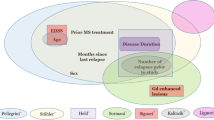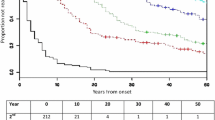Abstract
Previous studies of possible prognostic indicators for multiple sclerosis have been based on “classic” Cox's proportional hazards regression model, as well as on equivalent or simpler approaches, restricting their attention to variables measured either at disease onset or at a few points during follow-up. The aim of our study was to analyse the risk of reaching secondary progression in MS patients with a relapsing remitting intial course, using two different statistical approaches: a Cox's proportional-hazards model and a Bayesian latent-variable model with Markov chain Monte Carlo methods of computation. In comparison with a standard statistical approach, our model is advantageous because, exploiting all the information gleaned from the patient as it is gradually made available, it is capable to detect even small prognostic effects.
Similar content being viewed by others
Author information
Authors and Affiliations
Rights and permissions
About this article
Cite this article
Bergamaschi, R., Romani, A., Tonietti, S. et al. Usefulness of Bayesian graphical models for early prediction of disease progression in multiple sclerosis. Neurol Sci 21 (Suppl 2), S819–S823 (2000). https://doi.org/10.1007/s100720070019
Issue Date:
DOI: https://doi.org/10.1007/s100720070019




